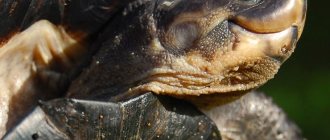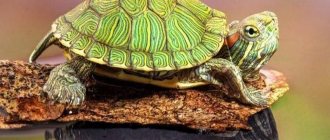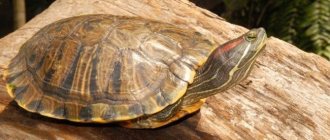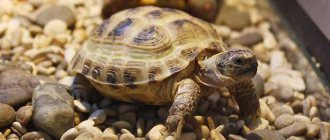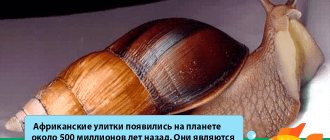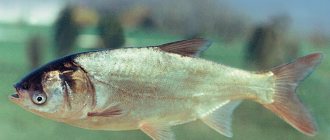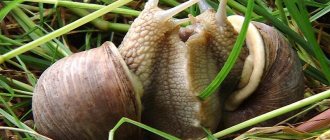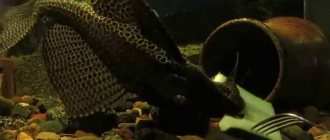Content
Ludwigia prefers a low water level, but any container will do. In large aquariums it is customary to plant it near the side walls. The plant grows and develops evenly throughout the year.
This type of flora prefers moderate tropical conditions. Therefore, the optimal temperature ranges from 20-28 degrees Celsius. Water hardness does not in any way affect the condition of the plant, nor does acidity. Ludwigia tolerates slightly acidic and alkaline water with a pH of 6-8. With a hardness of more than 8°, the color of the leaves becomes rich and bright.
You can replace a third of the water once a week, but this requirement is not necessary.
This plant does not require mandatory rooting. It can float on the surface of the water, but in the ground growth and development occur somewhat faster.
Lighting plays a huge role in the life of any plant, and ludwigia is no exception. It allows you to maintain decorative qualities and promotes active growth. This aquarium plant prefers diffused sunlight or weak artificial lighting. Thanks to the daylight received from the window, the leaves acquire a green color, and the redness and brown tint disappear. If the choice fell on artificial light, then you need to purchase fluorescent lamps (0.5 W per liter of capacity). To get a bright color, it is recommended to add a low power incandescent lamp (40 W). Daylight hours should last at least 12 hours.
This plant does not require mandatory rooting. It can float on the surface of the water, but in the ground growth and development occur somewhat faster. Coarse sand with a lot of silt is suitable. A layer of a few centimeters is enough for Ludwigia to take root.
It will not be superfluous to feed the plant with mineral fertilizers . In particular, to achieve maximum brightness of leaf color, the flora needs iron.
Family of Ludwigia - description
In aquarium conditions, all ludwigias do not require special conditions, they are unpretentious and can adapt to water with a wide chemical composition. The temperature suitable for life is 18-30 ° C, they like shallow water, from 10 to 20 cm. For lush growth, plants are fed with special root fertilizers, which are sold in the form of tablets for the aquarium. A mandatory requirement is rich lighting, but there is no need to overdo it, since light provokes the growth of algae on the stems of Ludwigia.
The most useful type of lighting is natural light. For artificial lighting, it is recommended to use incandescent and LB fluorescent lamps. The number of hours of daylight is exactly 12. Such plants also adapt to the conditions of a deep aquarium; before “relocating” they are planted in pots, hanging close to the surface of the water.
See how to grow ludwigia.
https://youtube.com/watch?v=5TIbo95cFLw
Even purely aquarium varieties of Ludwigia (such as the red one) love shallow water, leaving part of the plant above the water. When optimal conditions for growth are created, members of the family bloom profusely. The flowers of Willowweed are dim, only creeping Ludwigia has bright yellow flowers up to 5 mm in diameter. Other varieties are also beautiful, despite the lack of lush flowering. Ludwigia repens and Ludwigia red have bright, beautiful leaves. The latter has taken root well in Russian aquariums.
About red ludwigia
Ludwigia Palustris Super Red is an incredibly beautiful representative of the Fireweed family. This unusual plant has a large fleshy stem with small rounded scarlet leaves with a diameter of 2-3 cm. The top of the stem ends in lush rosettes resembling flowers. The unique shade of Ludwigia red looks provocative. At first glance, the super scarlet hue of the Mini Ludwigia stands out too much against the flora and fauna of the aquarium, but with the right lighting the appearance will become more pleasant. Pairs well with bright green plants. Super reds are resistant to nitrogenous fertilizers, but you should not overdo it.
Can be kept in average water conditions. It grows slowly. Suitable conditions: strong lighting, water temperature from 15 to 29 degrees. Branch height 15-20 cm. Leaf blade 1-2 cm long and 1 cm wide, slightly wavy. Both sides of the sheet are painted red. The stem is erect, branching. Super red has an underdeveloped root system and sometimes produces aerial roots. Suitable for experienced aquarists who know how to care for it.
Admire the color of Ludwigia super ed.
How to properly care for a plant
Super ed can be classified as a plant of medium complexity. You can maintain it by first familiarizing yourself with all the intricacies.
- Prepare lighting for Super Red Ludwigia of 0.5-1 W per liter of water. To prevent algae from appearing on the stem, you should increase the supply of carbon dioxide and regularly add liquid fertilizers to the water. Softened water promotes better absorption of nutrients. With a lack of iron, the stem begins to rot.
- Super red is usually planted in the aquarium in the middle ground and under the wall. It is recommended to plant 2-3 branches in one hole. By trimming the top of the main shoot, you will get a lush bush.
- Ludwigia super red propagate by cuttings. Parts of the main shoot or side shoots are transplanted, but the latter must be of sufficient length to ensure good survival.
- Light with lamps for aquarium plants such as Grolux Ludwigia - the light will be very bright.
- Empty soils with natural silt are suitable.
This super red aquarium plant from the Fireweed family attracts the attention of aquarium lovers when cut. It looks organic with other plants, and is also very resistant to average conditions. For a long time it retains the original shape of the bush, on which scarlet leaves flaunt. Gift your home pond with rich shades of scarlet beauty!
Reproduction and planting
The process is quite simple. It is enough to separate the cuttings from the stems, about 10 cm in size. Then you can leave them floating until they develop roots, or immediately plant them in the ground.
In addition to the aquarium, Ludwigia gets along well in a paludarium and greenhouse with a high level of moisture. In order to make it a land plant, first it is planted in soil covered with water. When it produces new stems, they are transplanted into a mixture of sand, humus, or peat and garden soil. After some time, the plant will take root and resume growth. It is important to provide him with strong diffused lighting at this time.
Description of the genus “LUDWIGIA (Ludwigia)”
Department Flowering, or Angiosperms (MAGNOLIOPHYTA), or (ANGIOSPERMAE) Family: Onagraceae
It grows in swamps and ponds almost all over the Earth. The stem is elongated, erect. Leaf arrangement is alternate or opposite. The leaves are simple, sessile or petiolate. The flowers grow one at a time in the axils of the leaves. Planted in nutritious soil in the middle and background.
Lighting: 0.4-0.5 W/l.
Water: 20-26°C, KH 2-12°, pH 6-7.5.
From the editor: Do aquarium fish and cats live together?
Propagated by cuttings.
Other species of the genus:
- Ludwigia alternifolia
- Ludwigia arcuata
- Ludwigia palustris
Kinds
There are more than ten types of Ludwigia, each of which has its own characteristics:
Creeping
Its second name is repens. The leaf shape is oval, the surface is glossy and shiny. The leaves have a reddish tint at the base, and the rest of the surface is dark green. This is a fairly large plant, the stems of which reach 40 cm in length. Loves clean water, where the concentration of organic waste does not exceed the norm, and strong lighting. Suitable for both artificial and natural. Creeping ludwigia will become an indispensable component of tropical aquariums, serving as a shelter for small fish species;
Swamp or palustris
The stem of this plant branches in several places, which distinguishes it from the rest. The leaf color is light olive, with a red and even purple tint at the base. Refers to flowering species. The buds are tied in the axils of the leaves. Flowers have 4 petals. The stems are long and can grow up to half a meter, so it needs a tall aquarium or aquaterrarium;
Arcuate (or arcuate)
It looks very impressive, but for unknown reasons it is rarely used by aquarists as decoration for aquariums. This ludwigia is unpretentious, does not require special parameters of hardness and acidity, prefers diffused natural or artificial light;
Brevipes
The leaves have a double color - the upper part is red-green, the lower part is pink. If the aquarium is deep and the plant lacks light, the leaves become yellow and their reverse side turns reddish. Suitable for forming a bush. To do this, you will need to periodically trim the overgrown branches;
Inclinata
The most demanding of all the species presented. Ludwigia inclinata necessarily requires the addition of CO2 and water softening. You will also need proper lighting, thanks to which you can achieve a rich orange leaf color. If the lighting is not chosen correctly, the leaves will become a blurry yellow-brown color;
Longifolia
Slightly similar to arcuata, but has larger and wider leaves. A completely unpretentious plant that will feel great in both an aquarium and a greenhouse. It is enough to maintain soft water and sufficient lighting. Does not require mandatory rooting and can float freely around the aquarium;
floating
One of the largest representatives. The stem reaches 1 meter in length, on the sides of which large rounded leaves are located in pairs. This species can only exist on the surface of the water, since its leaves quickly die off under water. Loves intense light, at a rate of 1.5 W per liter of volume. Typically kept in open aquariums or ponds. Proper maintenance in an aquarium can lead to flowering. Produces one white five-petaled flower;
Peruvian
Another species with difficult conditions. The plant is very delicate and dies at the slightest deviation in the biobalance. It is preferred exclusively by aquarium botanists;
Narrow-leaved
It has red needle-shaped leaves. The plant branches quickly and can reach half a meter in length. In order to maintain a rich red color, high-quality lighting and CO2 are necessary;
Tornado
It was bred artificially. Significantly smaller than other species. It is distinguished by a spiral leaf shape and a green color with a red transition;
Distribution area
The natural habitat is all continents except Antarctica. The plant has even penetrated into the wild nature of Australia, where it was introduced as an aquarium crop.
Prefers to grow along the shores of shallow freshwater areas, both in the air and in the submerged state. By the growth of ludwigia in water bodies, it is possible to determine the presence of peat and silt deposits in water bodies.
Diseases
Rotting of the lower leaves occurs in low light, both in the aquarium itself and in the individual plant. You can save Ludwigia by cutting off good parts of twigs and rosettes and running them over the surface. In this situation, it is advisable to change the water and immediately return the lighting to normal.
Holes may appear on the leaves - this indicates a lack of calcium in mineral supplements.
Turbidity, dirt and high levels of carbon dioxide in the aquarium inhibit the plant. Weekly water changes (at least by a third) and constant aeration - only in such conditions does Ludwigia “ruby” grow.
The leaves are pressed very close to the stem - an alarming symptom, you need to urgently measure the water hardness, the indicator can be critical. A pH of 4 to 7 is considered normal.
Compliance with simple conditions will allow you to grow a beautiful plant. And Ludwigia “ruby” can live in an aquarium for several years.
Compatibility
Not all plants can be planted in a community aquarium. You should also not plant Ludwigia in containers with certain types of fish. For example, it is not recommended to grow this crop in an aquarium where there are fish that like to burrow in the ground. These include, for example, cichlids. Such fish, with their habit of digging in the ground, can damage the rhizome of Ludwigia, which will negatively affect the development of the algae.
As for other types of herbs, you should select plants whose maintenance conditions are similar to those for ludwigia. So, this culture loves bright light, and this is not always good for other plants
In addition, it is important to plant herbs in the aquarium that will not grow too much and block the light for the ludwigia. Avoid large-leaved green spaces
In addition to its decorative function, ludwigia also has a practical function. For example, it can become a refuge for schools of fry or small fish such as guppies, gourami, and mollies. Some aquarium inhabitants are not averse to eating its healthy leaves, enriched with vitamins.
What it is?
Dessert wine is a sweet drink with a sugar content of 16-20% and alcohol content of up to 17%. Its color depends on the variety of grapes chosen. The drink can have either a delicate straw hue or a rich ruby color. The aroma includes fruit and berry notes with the unobtrusive presence of spices.
In the international classification there is no definition as red or white dessert wine. In England, it is any medium-strength sweet alcohol served with meals. In America, this is the name given to berry and fruit alcohol, in which the alcohol content exceeds 14%. In Russia, these are sweet fortified drinks made from grapes, which are served after meals as a digestif. Although in many modern establishments such alcohol is offered as an aperitif before the main meal.
Interesting No sweeteners are used in the production of table wines.
Red dessert wine is made from Cabernet, Saperavi, Isabella, and Black Muscat. White dessert wine is made from Blanc Sauvignon, White Muscat, and Chardonnay varieties. The sweetest berries are selected and dried in the sun.
Dried grapes in the sun
This is necessary to evaporate excess moisture and increase the concentration of grape juice. The berries are dried either picked or directly on the bushes, depending on the type of drink.
Use in aquadesign
Ludwigia is often used in aquatic design as an accent. The varieties with scarlet leaves look especially impressive. If you group several plant cuttings together, you can create a red-green forest in the background of an artificial pond. You can also place the bushes in the middle part of the container if you trim them regularly. To obtain dense thickets, cut off the side shoots. If you cut off the bottom part, then the ludwigia will grow upward.
In strong light the plant is placed in the foreground, but it will have to be trimmed frequently to make it look spectacular. This option is often used by experienced aquarium owners. It is not recommended to plant bushes in shaded areas of the tank, otherwise they will stop growing and disappear over time.
With Ludwigia you can create an original and unique aquarium design. There is a suitable plant variety for any aquatic interior. Once you become familiar with the characteristics of Ludwigia species, you can successfully grow it in an aquarium for many years.
Ludwigia inclinata
Ludwigia inclinata naturally grows in very soft water, semi-submerged or submerged, and loves
movement of water. A very beautiful plant, long known, but extremely rare among aquarists. What is the reason for this rarity? The answer is simple - difficulties in content. If you consider yourself a pro in aquadesign, then buy Ludwigia inclinata, suffer yourself! Ludwigia inclinata grows quickly in soft water (KN no more than 6) with the addition of CO2, but fast growth does not mean that the plant will have a beautiful appearance. Unfortunately, more often Ludwigia inclinata has a vaguely light brown leaf color. The color of the leaves in optimal conditions is orange. The leaves are opposite, each subsequent pair is located perpendicular to the previous one, the apex is rounded, the base is narrowed. Leaves are up to 5 cm long and up to 1 cm wide. The surface of the leaves is wavy. The stem is up to 3 mm in diameter. I managed to achieve a beautiful orange color after refusing to add fertilizers (phosphate, nitrate, iron) to the water column. According to my observations, the key to the beautiful appearance of this plant is ideally adjusted biofiltration and a minimal amount of organic matter in the water. Ludwigia inclinata can easily be confused with rotala makrandra, but there is a noticeable difference - brown veins are clearly visible on the leaves of Ludwigia inclinata. Lighting - no less than 0.5 W/l, pH - 6.8, with CO2 supply. At a pH above 7, Ludwigia inclinata degrades. Water temperature 20...30°C. In my photograph, Ludwigia was taken under conditions: KH = 3, pH = 6.8, light - 1 W/l. Growth rate: fast. Conditions: very difficult, extremely difficult to achieve orange leaves.
Longleaf Ludwigia (Ludwigia oblongofolia)
An original plant, the systematic position of which has not been definitively established. Possibly a subspecies of L.arcuata. At least, both of these species are very similar in appearance, except that the leaves of Ludwigia longifolia are slightly wider and larger. Be that as it may, L.oblongifolia is a very nice hydrophyte, which is appropriate not only in an aquarium, but also in a paludarium or a wet greenhouse. The brownish-red color of the leaves of this long-stemmed marsh plant pleasantly contrasts with the greenery of the aquarium garden, making the picture of the underwater world brighter and more refined. This relatively unpretentious plant prefers shallow, well-lit containers with soft, slightly acidic water. It can grow in partial shade, but at the same time it loses the richness of color and foliage of the lower part of the stem. Both have a negative impact on the decorative value of the plant. Optimal maintenance conditions: T = 20-28oC, pH 6.0-7.5, dGH 2-12o, clean, free from suspended matter, fresh water. The recommended length of daylight hours is 10-12 hours. The nature of the soil and the degree of its nutritional value are not of fundamental importance. If necessary, you don’t have to root the plant at all (it does, however, make it smaller), but you shouldn’t neglect the opportunity to supply CO2 to the aquarium. Vegetative propagation is by cuttings.
From the editor: Tetra GoldOomed instructions for use
Approximate size: 20 cm.
Other varieties
The above types are among the most popular, but there are a number of interesting varieties that are also popular.
- Ludwigia senegalese, or Mexico City. Its natural habitat is the humid areas of Africa. Ludwigia senegalese is considered a fairly new plant variety presented on the aquarium market. It is distinguished by its Mexico color: the oval leaves are completely red-brown, with a subtle pattern resembling spots.
- Red, or super red, or super red mini - includes several varieties. A characteristic feature of the super red species is its leaves: they are slightly smaller than those of the ordinary one, rounded, graceful. The super red species is distinguished by the fact that at the top of the stem the leaves form rosettes resembling flowers. Super red has a rich scarlet color, thanks to which it looks impressive next to bright green plants.
- Ludwigia peruviana, or diamond, is probably the most whimsical variety. It is distinguished by its bright color: the leaves are green on top and red-brown underneath. It gets along rather difficultly in an aquarium and dies quickly if the balance in the water is disturbed, so this species is preferred only by experienced aquarists and herbalists.
- Ludwigia marilia is an equally interesting variety; it is unpretentious and takes root well in an aquarium. The shape of the leaves is round, and the color is greenish-yellow; The stalk is long and thin, thanks to which the algae spreads beautifully and easily across the water.
- Mato grosso is a very original species, the specificity of which is the shape of the leaves. The stem of mato grosso is thin and soft, due to which the plant lies neatly on the surface of the water. The leaves are colored smoky green and form soft rosettes at the top, reminiscent of blossoming buds.
- Ludwigia inclinata - includes several interesting subspecies, at least four of which are successfully bred in aquariums, but two are considered the most famous: Ludwigia inclinata, the “cube” species. Cuba appeared on the aquarium market relatively recently, but has already taken a strong position. The species is distinguished by the fact that, having oval leaves in nature, when planted in an aquarium it changes its appearance: the leaves become elongated and noticeably narrower. The natural green color changes to marble, with a slight copper tint.
- Another variety is Ludwigia tornado. This species was grown artificially in aquarium nurseries. Ludwigia tornado is smaller than the Cuban Ludwigia inclinata, and its main feature is its spiral-shaped leaves. The color of the leaves is green, with a red-purple transition.
Sources
- https://aquarium-fish-home.ru/uncategorized/lyudvigiya-polzuchaya-soderzhanie/.html
- https://kykarek.com/fish/plants/ljudvigija-polzuchaja-40348/
- https://fb.ru/article/312363/lyudvigiya-rubin-kapli-krasnogo-vina-v-akvariume
- https://pets2.me/bok/1723-lyudvigiya-rubin-kak-uhazhivat-za-akvariumnym-rasteniem-v-domashnih-usloviyah.html
- https://NashiRybki.ru/rasteniya/lyudvigiya.html
